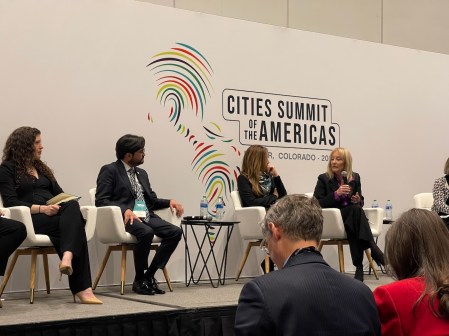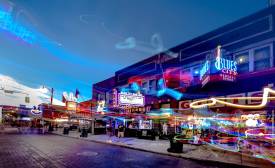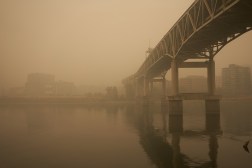Austin uses data sharing, connected sensors to ease traffic congestion

AUSTIN, Texas — With a rapidly exploding population and a corresponding increase in traffic congestion, Austin officials are increasingly using connected sensors, data-sharing programs and mobile apps to get people moving, according to Jim Dale, the assistant director of the city’s transportation department.
At a panel discussion at the “Smart Cities Innovation Summit” here Tuesday, Dale detailed his agency’s focus on using technology of all kinds to make things easier for commuters. After all, Dale said a recent survey by local media outlets found that 51 percent of the city’s residents said traffic congestion was their least favorite thing about living in the city, making it a huge issue for the government to address.
Dale noted that the city has launched plenty of programs to combat traffic, but officials have increasingly tried to take advantage of the “huge asset” the city has in its robust private sector by sharing more data with GPS software providers.
“Like most agencies, our data is siloed, but we’re trying to make it available any time you want access to it, whether it’s archived or in real time,” Dale said. “We’re just making data available and then letting folks create value from it.”
Specifically, Dale said the city start trying to cut down on traffic and make its roads safer by sharing key data sets with companies and the public in real time.
One data set he said that has proved especially helpful for GPS companies is the status of crossings over bodies of water that flood easily. As those crossings shut down, Dale’s department is able to update its data and share that information on an online portal and with companies to help them better direct people out on the roads.
“We’re hoping that this reduces frustration because people don’t have to turn around when they see something is closed, and improves safety, by getting people away from flooded areas,” Dale said.
[Read more: Global City Teams Challenge organizer sees IoT tech making it into the field faster than ever before]
Similarly, he’s trying to make information about when school zone speed restrictions go into effect freely available online, giving people the chance to avoid those areas and keeping students safer by cutting down on congestion near schools.
Eventually, he even sees the city government serving as a sort of data clearinghouse for traffic information from throughout the region. He envisions the city teaming up with the state to set up a “regional operating management center” to coordinate the tracking of traffic data from city streets, as well as nearby state-run highways, to look at all roads in the area as “one arterial system.”
He thinks Austin could also help serve as an intermediary for various GPS software providers during major traffic backups. As each mobile app directs users to the same alternate routes, Dale thinks the government could be a good arbiter of this “proprietary data,” while still making sure that people aren’t all sent to the same detour.
“We can change signal timing on the alternate route or even identify another route for some people,” Dale said. “We’re not there yet, but if we can build trust with the private sector, that’s a role the government can play here.”
In the meantime, Davis is experimenting with a different kind of change mechanism for traffic signals. His department has started installing sensors on city buses that can alert Austin’s traffic control center when they’re running behind schedule.
“Based on the position of the bus, it sends a request to the center, and then they can send out a request for extended green lights for the bus,” Dale said. “And we have a similar project with emergency vehicles.”
Dale doesn’t want to leave out bikers, either. The department now offers a mobile app for cyclists that can communicate with some of the city’s traffic lights, Dale said.
“A lot of times, we’ve heard bikers say that they’re just not detected when they’re waiting for a light to change because they don’t trigger the pressure sensor,” Dale said. “This changes that.”
While some of these programs might seem quite futuristic, Dale noted that necessity has proved to be the mother of invention in these cases.
“We’re one of the fastest growing cities in America, and traffic congestion is getting worse,” Dale said. “It just sets us up to be innovative and try things we’ve never tried before.”
Contact the reporter who wrote this story at alex.koma@statescoop.com, or follow him on Twitter at @AlexKomaSNG.






